Grand form of Gurukul education
On

Dr. Acharya Sadhvi Devpriya
Vice Chancellor and Dean Patanjali University, Haridwar, Uttarakhand, India
Sixty four arts
The description of 64 arts is found in the third episode of the fourth chapter of Shukracharya's book named Nitisara. According to him the arts are infinite, the names of all of them cannot be counted, but 64 arts are the main among them. Describing the characteristics of art, Acharya writes that which even a mute (dumb) person, who can not even pronounce, he can learn, that is 'art'.
According to Srivasavarajendra Virchit and Jayamangala and Shukranitisara, the 64 arts are as follows:
1. Movement with gestures etc. is called dance. 2. Knowledge of making and playing different types of instruments. 3. Dressing men and women in clothes and adornments smoothly. 4. Knowledge of manifestation of many types of forms. 5. The bed and the bed (bed) are laid beautifully and the flowers are arranged in many ways kneading in kind 6. Entertaining people with many games like gaming etc. 7. Knowledge of Suratkrida through various types of asanas. 8. The creation of infusion, liquor etc. from different types of nectar (floral juice). 9. To reduce the pain of surgery (prickly thorns in the foot) or to remove the organs by surgery, dissection of vein (nadi) and boils etc. 10. Cooking various types of food grains containing asafoetida etc. rasa (spices). 11. The work of planting trees, vines, creepers, etc., to produce different types of fruits, flowers and to protect those trees from many disturbances. 12. Digging of metals like stone, gold and silver, etc. to burn those metals. 13. Knowledge of making all kinds of Ikshu (b) substances like rawa, jaggery, khand, sugar, sugar candy, kand etc. 14. Knowledge of mixing various metals like gold and many other medicines. 15. Separation of mixed metals from the mixture. 16. Unique science of mixing metals etc. 17. Science of extracting salt (salt) etc. from substances like sea or soil. 18. Stabilizing the aim of weapons and their movement with specific movements of the legs etc. (changing the maneuver). 19. War (wrestling) of two mallas (wrestlers) by striking the joints (joints) of the body or pulling different parts. 20. The battle which is waged by various types of very fierce arm (Mushti) strikes, by suddenly pouncing on the enemy, holding it and rubbing it, etc., is called 'Nipidan' and by such 'Kiddana' done by the enemy. Save yourself the name 'Reaction'. 21. Throwing weapons at the target country (target) with various instruments and performing the action of strategy (raising the army in a particular way) with the signal of any instrument (trumpet, trumpet etc.). 22. To organize war with the special movements of elephants, horses and chariots. 23. To please the deities with different types of asanas (sitting type) and mudras (figures of Ankush, Padma, Dhenu etc. made with the fingers of both hands). 24. Saarthya - The work of driving chariots (coachwani) and teaching elephants, horses to various types of movements (gait). 25. Making of pottery from metals like clay, wood, stone and brass. 26. Drafting of pictures. 27. To make ponds, stepwells, wells, prasad (palace and temple) etc. and equalize the land (high and low). 28. To find the time by means of Ghati (Clock) etc. 29. To make several instruments. 30. Coloring of articles of clothing etc. with different colors made of less, more or equal combination of certain colours. 31. To perform many actions by stopping the vapor (steam) produced by the combination of water, air and fire. 32. To make means of transportation of water-land like boats, chariots etc. 33. Making of rope from threads, flax etc. 34. To make a patbandh (clothing) from many fibers. 35. Knowledge of identifying gems and making holes in them. 36. To know the reality (realness) of gold, silver etc. 37. Science of making imitation gold-silver and diamond-pearl gems etc. 38. Making gold and silver jewelery and coating etc. (Meenakari). 39. To soften leather and prepare useful goods from it. 40. On the body of animals separating the leather from 41. To know all the activities from milking cow, buffalo etc. to setting curd, churning, extracting butter and making ghee from it. 42. Sew clothes like kurta etc. 43. Swim in water in different ways with the help of limbs like hands, feet etc. 44. Knowledge of cleaning household utensils. 45. Cleaning (washing thoroughly) of clothes. 46. Kshor Karma (shaving). 47. The work of extracting oil from oilseeds and meats like sesame, tisi, castor etc. 48. Knowing how to plow. 49. Knowing how to climb trees. 50. Manonukul (Knowledge to serve others according to their wishes. 51. Making pots (baskets, tents etc.) from bamboo, palm, date, flax etc. 52. Making glass utensils etc. 53. Impregnation with water ( Irrigate the fields well). , Making suitable saddles (genes, saddles) for riding the backs of horses, oxen and camels. 57. Protection (rearing) of infants. 60. Knowledge of chasing (punishing) criminals according to their crime. 61. Writing the script of different countries beautifully. 62. To protect the betel in such a way that the betel does not dry up for a long time, nor does it get sore. - Rotten. 63. Input, the spontaneity in doing some work (doing it quickly) is called 'Aadan'. 64. Pratidan : Doing it for a very long time is called Pratidan.
In the 43rd canto of Ayodhya Kand of Valmiki Ramayana, while going from Bharadwaj's ashram towards Chitrakoot, it was very difficult to cross the Yamuna on the way due to the excess of water, then both the brothers collected some wood from the forest and made a raft very skillfully. Crossed the Yamuna, this is a strong proof of the science of Gurukuliya craftsmanship.
Chintamapedire Sarve Nadijalatiteershavah ll
Tau Kashthasanghatamatho Chakratuh Sumahaplavam ll [15]
And in the same way, after reaching Chitrakoot, Ram-Lakshman built a beautiful parnasala, it shows that despite being a prince, he had also received education in building construction in Gurukul.
Tasya Tadvachanam Shrutva Saumitrirvividhana Druman l
Aajhar Tatshchakre Parnashalamarindamah ll [16] (W.R. 2.56.20)
In ancient times the curriculum of education was so extensive that almost all subjects were included in it. Along with this, the omniscient intelligence of teachers is also easily assessed when they in addition to the prevailing curriculum, students from other parts were educated according to their customs.
Aetaddeshprasutasya Sakashadagrajanmanah l
Swam Swam Charitram Shiksherana Prithivyam Sarvamanavah [17]
Nowadays there are some institutions where hundreds of students commit suicide every year because their rank in the competition did not come up, those students are not made aware that apart from this it is open to them to fly in different directions. The sky is
7. Women's Education
In ancient times, generally no distinction was made in the name of men and women in relation to education, but it was necessary that there were separate Gurukuls for boys and girls. According to the description of Vedic literature, in the highest education, male rishis, Maharishis, rajarshis, and brahmarishis and women after attaining the highest education took the names of Brahmavadini and Rishika. The name of Brahmavadini Vidushi Gargi is very famous in the world of Vedic literature. Her father's name was Vachkru, due to her being a daughter, her name was 'Vachknavi'. Being born in the Garga gotra, people also called him Gargi. In the Brihadaranyakopanishad, a detailed description of his debate is found. Mother 'Mamata', 'Vishvavara', 'Apala', 'Ghosha', the mother of sage Longtama, are all sages. 'Surya', 'Romasha', 'Eternal' etc. have got the distinction of being the seer Rishika of various Vedic hymns.
In the Brihadaranyakopanishad Maitreyi's inquiry into the esoteric spiritual subjects of her husband and his doubts were cleared by Yajnavalkya a detailed description is available.
Besides these, Romsha, Lopamudra, Juhu, Vagambhrini, Kadu, Paulmi, Jarita, Shraddha, Sarparajni, Aditi, Atreyi, Urvashi, Yami, Indrani, Savitri, Devajami, Nodh, Akrishtabhasha, Sikatanibavari, Gopayani and other sages are also mentioned in the Vedic texts is. Maharishi Shaunaka mentions the names of twenty-seven sages in his book Brihatdevata (2/84-86).
(Ghosha Godha Visvavara Apalopanisht I Brahmajaya Juhurnama Agastsya Swasaditih II Indrani Chendrani Cendramata Cha Sarma Rogshorvasi I Lopamudra Cha Nadyashcha Yami Nari Cha Shashwati II Shrirlaksha Sarparagyi Vavashraddha Medha Cha Dakshina I Surya Cha Savitri Cha Brahmavadinya Iritah II) [18]
Panini has mentioned such hostels in which girl students lived.
Chhatrayadayah Shalayam [19]
(Panini - 6.2.86).
Underlining the importance of women, it has been clarified in the Kaumarika section (23/47) of Skanda Purana that one daughter is equal to ten sons to occurs. Whatever good results a person can get by raising ten sons, all the same results can be obtained by giving birth to a single daughter. (Dasputrasama Kanya Dashputranpravardhyayan, yatphalam labhete martyastallabhyam kanyaikaya). [20] (It becomes clear from the above descriptions that when Acharya Shaghdar asked the Paniharins going towards Pankhat with an urn on the head of Mahishmati city, the address of the sage Mimansak Pandit Mandan Mishra, those village girls in ridiculed this in pure Sanskrit verses. Told that at the door where the men sitting in cages, the world among themselves is eternal, or impermanent? Or is the Veda a self-evident, or a paratha? He is seen discussing on this subject, that is the house of Pandit ji (Jagaddhruvam Syat Jagaddhruvam Syat, Kriradhana Yatra Giro Girianti. Dvarasthanidantarasnirudha, Janihi Tanmandan- Panditokah. Swayam Pramanam Paratha Pramana, Kriradhana Yatra Giroddhni Giranti, Janihi Tanmandanapanditaikah.) [21] At the same time, how great scholar Sharda Devi, wife of Mandan Mishra, was also evidenced by the fact that Adi Guru Shankaracharya, the wise man of that era, adorned her as the judge of his debate. While discussing women's education, it would be pertinent to mention Vidyottama, the daughter of King Shardanand and wife of the great poet Kalidas, who had defeated many contemporary scholars in the debate and introduced her incomparable intellect.
According to the illustration of 'Prithviraj Rasau', the learned princess Sanyogita took education along with about five hundred classmates in the girls' Gurukul run by 'Madana' Acharya. Not only this, but the statues of women writing letters etc. built in the medieval temples of South India, in fact, appear to present only archaeological evidence of female education in ancient India:
In the fourth volume (History Literature and Mythology) of William Ward's book 'The Hindus' published from London, which was published in 1811, it is mentioned that Hati Vidyalankar (original name Rooppanjari) was the wife of Jasomat Rai, a Brahmin of Nashipur, Bengal. , which was full of higher education, had opened a school Chatushpathy in Benaras (Bhadaini) in 1805 for the higher education of women, while in 1835 after the implementation of the English education rule, Savitri Bai Phule started her husband Jyoti Rao ( b) With the help of Phule and classmate Sagunbai, in 1848, a school for women was established at Bhidveda, Pune. Before the establishment of this school, Savitri Bai Phule had received education and training from the missionary institutions of Ahmednagar and Pune.
-To continue
Tags: patanjali patanjali wellness yog sandesh education india bharat university of patanjali bharat swabhiman patanjali yog samiti swami ramdev ji maharaj patanjali gurukulam acharyakulam patanjali research institute Acharya balkrishna patanjali yogpeeth patanjali yog sandfdesh yog gram yog guru haridwar devbhumi mahila patanjali yog samiti patanjali ayurvedic hospital indian education system ancient education system Grand form of Gurukul education
लेखक
Related Posts
Latest News
01 Sep 2024 17:59:05
जीवन का सत्य 1. पराविद्या- मनुष्य जब ईश्वरीय सामथ्र्य अर्थात् प्रकृति या परमेश्वर प्रदत्त शक्तियों का पूरा उपयोग कर लेता...



.jpg)
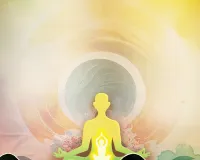

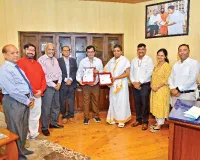
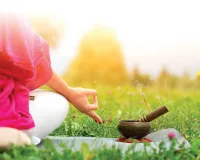
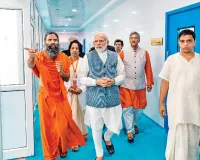

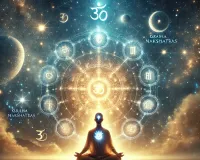
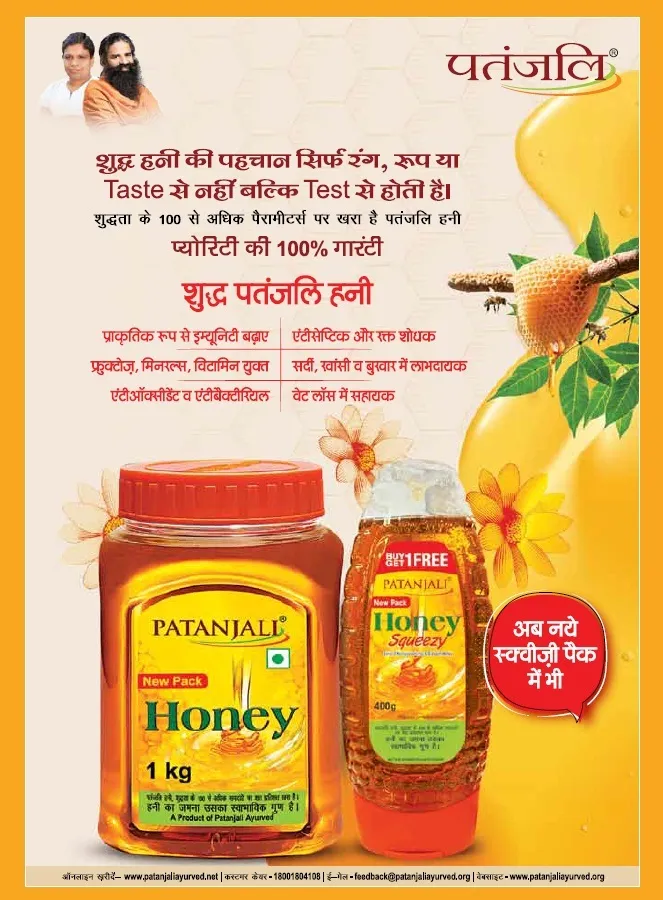
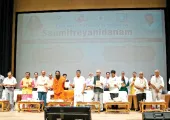

.jpg)
.jpg)





